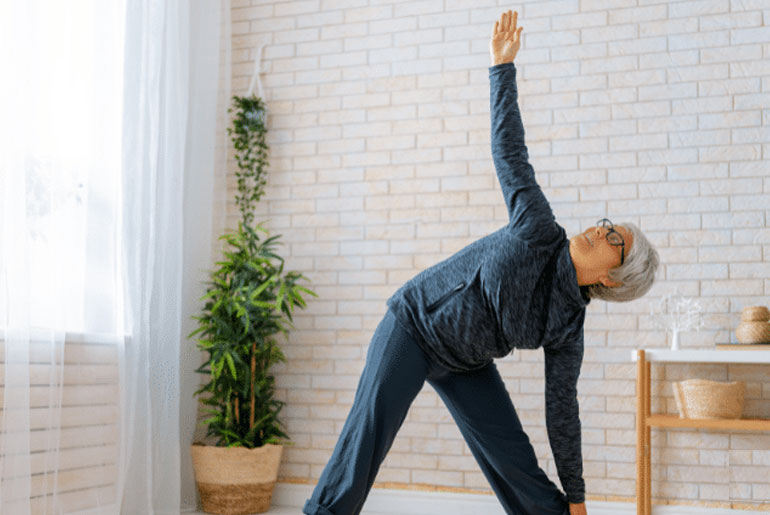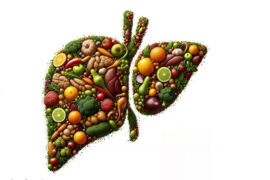Yoga experts emphasize that yoga is not merely about striking poses; it serves as a potent tool to alleviate the winter blues and counteract Seasonal Affective Disorder (SAD). With the onset of shorter and colder days, many individuals undergo a decline in mood and energy levels. The positive news is that yoga provides a holistic approach to elevate spirits and promote overall well-being throughout the winter months. Beyond the physical postures, yoga strategies encompass mindfulness, breathwork, and relaxation techniques, offering a comprehensive solution to combat the seasonal challenges to mental and emotional health. Engaging in regular yoga strategies during winter can be a transformative means to cultivate a positive mindset and enhance one’s overall resilience.
Promotes mindful movement:
Participating in yoga during the winter season promotes mindful movement. The intentional and conscious transitions from one pose to another cultivate a strong mind-body connection, anchoring individuals in the present moment. This mindfulness serves as a powerful antidote to the lethargy and reduced motivation commonly linked to the winter blues. The deliberate engagement with each movement in yoga not only enhances physical flexibility and strength but also encourages a heightened awareness of one’s body, breath, and surroundings. By incorporating mindful movement into the winter routine, individuals can counteract the seasonal challenges and foster a more grounded and present state of being.
Rhythmic breathing:
In winter, when there’s a tendency for both the air and our internal state to feel stagnant, yoga places a significant emphasis on deep, rhythmic breathing. This practice not only improves lung capacity but also revitalizes the body. The intentional focus on deep breathing during yoga brings an influx of oxygen, effectively boosting energy levels and alleviating feelings of sluggishness. Through the intentional control of breath, individuals can cultivate a sense of invigoration and release, allowing them to breathe away the winter blues. The conscious integration of deep breathing into yoga practice serves as a powerful tool for maintaining vitality and combating the seasonal challenges associated with low energy and inertia.
Pomotes increased circulation:
Cold weather often results in decreased blood circulation, contributing to feelings of chilliness and sluggishness. Yoga, particularly poses that involve twists and inversions, serves as a remedy by stimulating blood flow throughout the body. The intentional practice of these poses promotes increased circulation, which not only warms the body but also ensures that essential nutrients reach all parts of the body. This heightened circulation contributes to an overall sense of vitality, counteracting the winter-related challenges of reduced blood flow and the associated sensations of cold and lethargy. Through yoga, individuals can actively enhance their circulation, promoting a warmer and more invigorated state during the colder months.
Natural mood enhancers:
Certain yoga strategies have the remarkable ability to stimulate the release of endorphins, the body’s natural mood enhancers. Backbends, inversions, and sun salutations, among others, can trigger the production of these feel-good chemicals, effectively counteracting the gloominess often associated with winter. By incorporating these poses into your yoga practice, you can welcome the winter season with uplifted mood and a natural boost in well-being.
Moreover, winter brings its own set of stressors, including holidays, weather-related challenges, and year-end pressures. Yoga strategies offers a sanctuary to unwind and release tension. The combination of physical postures, deep breathing, and mindfulness activates the body’s relaxation response, reducing stress hormones and fostering a sense of calm. In the midst of winter blues, a dedicated yoga practice becomes a valuable tool for promoting mental and emotional well-being.
Additionally, winter disruptions to sleep patterns can be addressed through yoga strategies. A consistent practice, especially one that incorporates relaxing poses and meditation, has the potential to improve sleep quality. Gentle stretches and calming breathwork signal to the body that it’s time to relax, facilitating a restful night’s sleep amidst the challenges of winter.
Healing walk:
“Healing walk,” a distinctive form of body dynamics, is designed to create a structured walking practice believed to prevent and eliminate various diseases that may not have conventional medical cures. This practice addresses physical, emotional, mental, and spiritual aspects of well-being. To perform the healing walk, lift your arms at shoulder width and walk with them raised for 1-3 minutes, gradually increasing duration as you build strength in your arms and shoulders. This mindful walking practice can be incorporated into daily life to enhance well-being.
Taking yoga off the mat, especially during the winter season, can be beneficial. Mindful walking, focusing on each step and grounding oneself in the present moment, serves as a powerful walking meditation for managing anxiety. By embracing yoga strategies as a holistic approach that combines movement, breath, and mindfulness, individuals can effectively address the physical and mental challenges of winter. Whether you are an experienced yogi or a beginner, tailoring a winter yoga strategies routine to your needs can lift your spirits and contribute to a brighter and more energized season. So, unroll your mat, breathe deeply, and let yoga guide you to a rejuvenated winter experience.
Disclaimer:
The information contained in this article is for educational and informational purposes only and is not intended as a health advice. We would ask you to consult a qualified professional or medical expert to gain additional knowledge before you choose to consume any product or perform any exercise.








